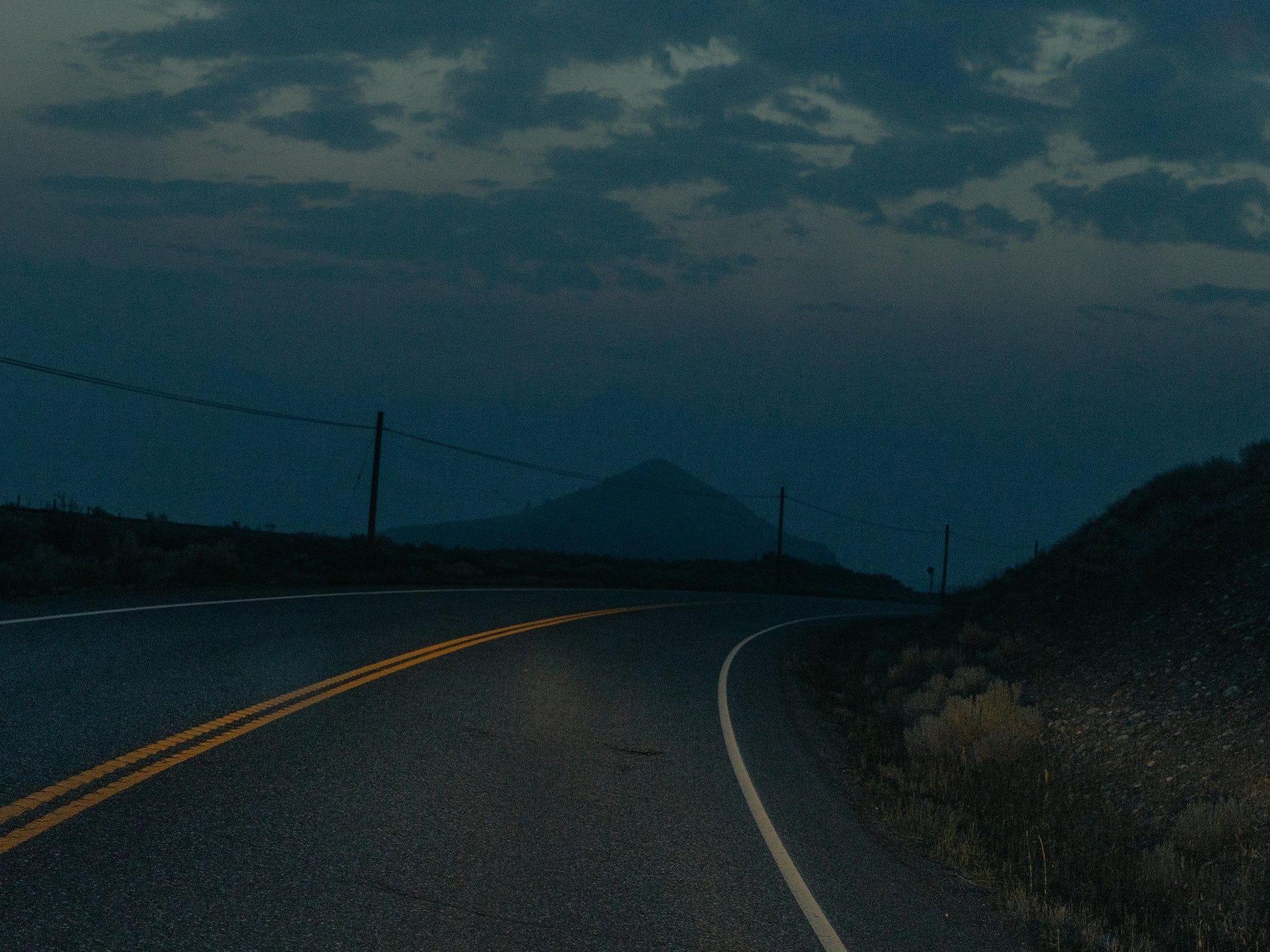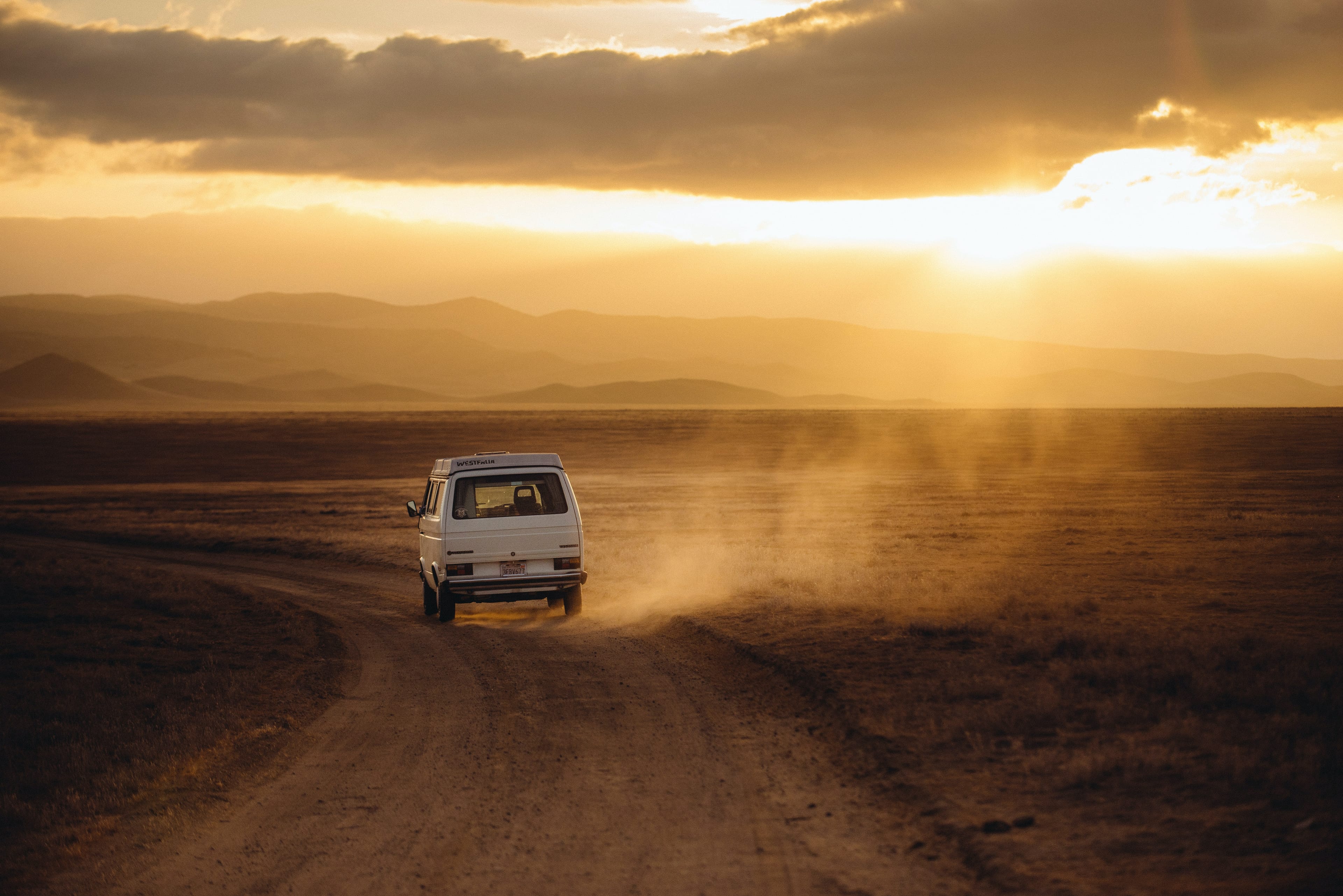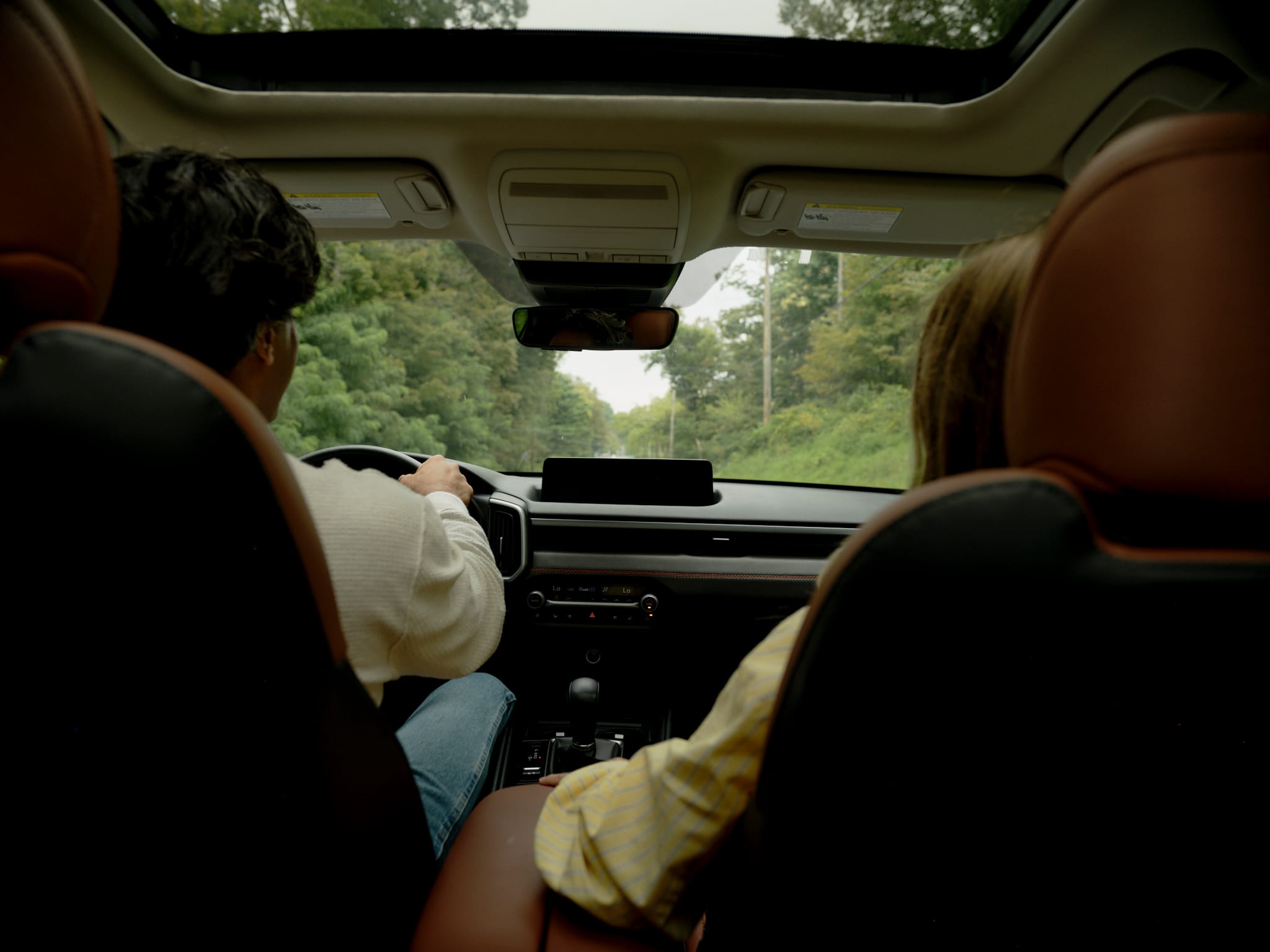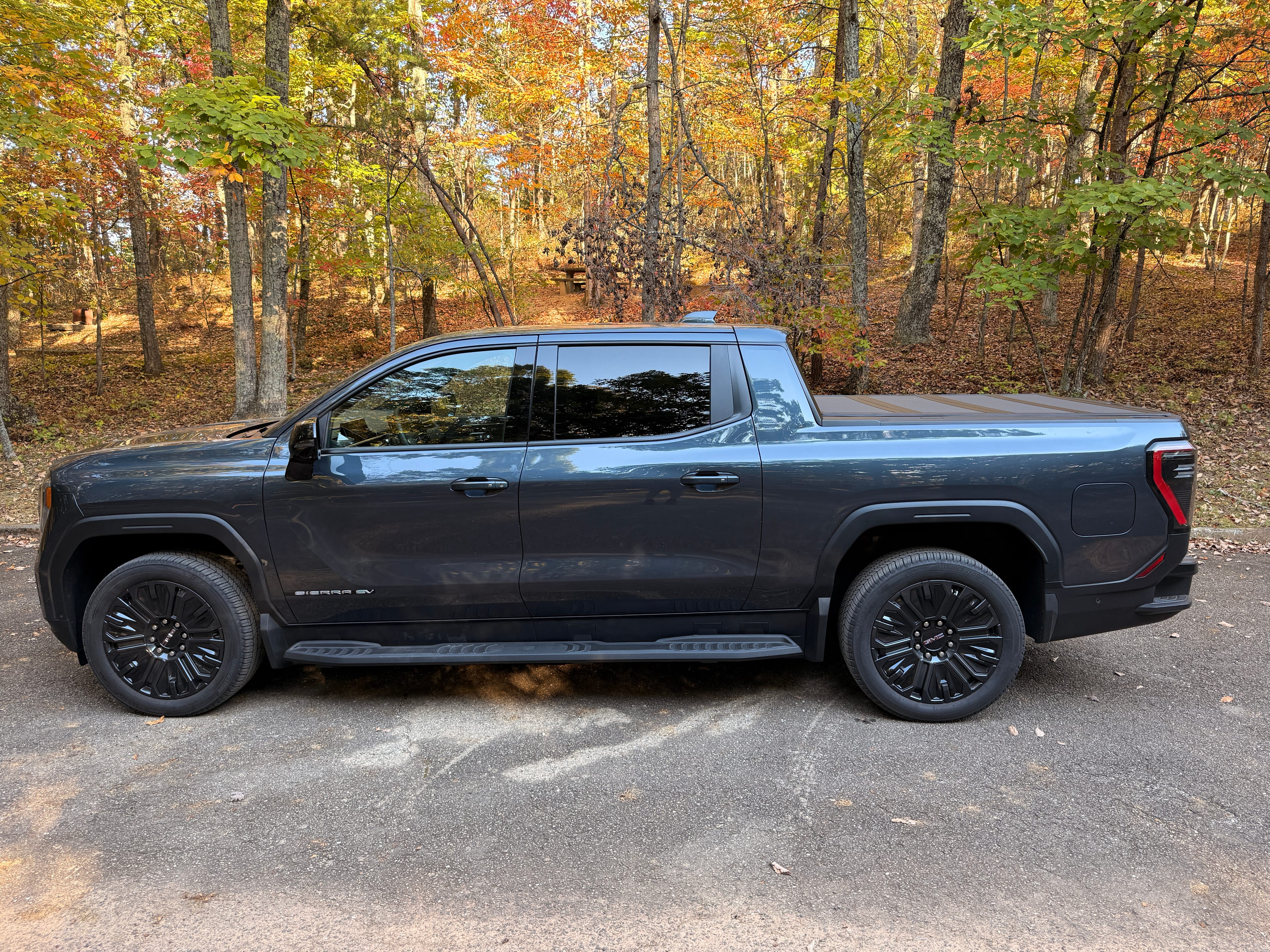Road Trips
That Reveal
America’s Darkest Skies
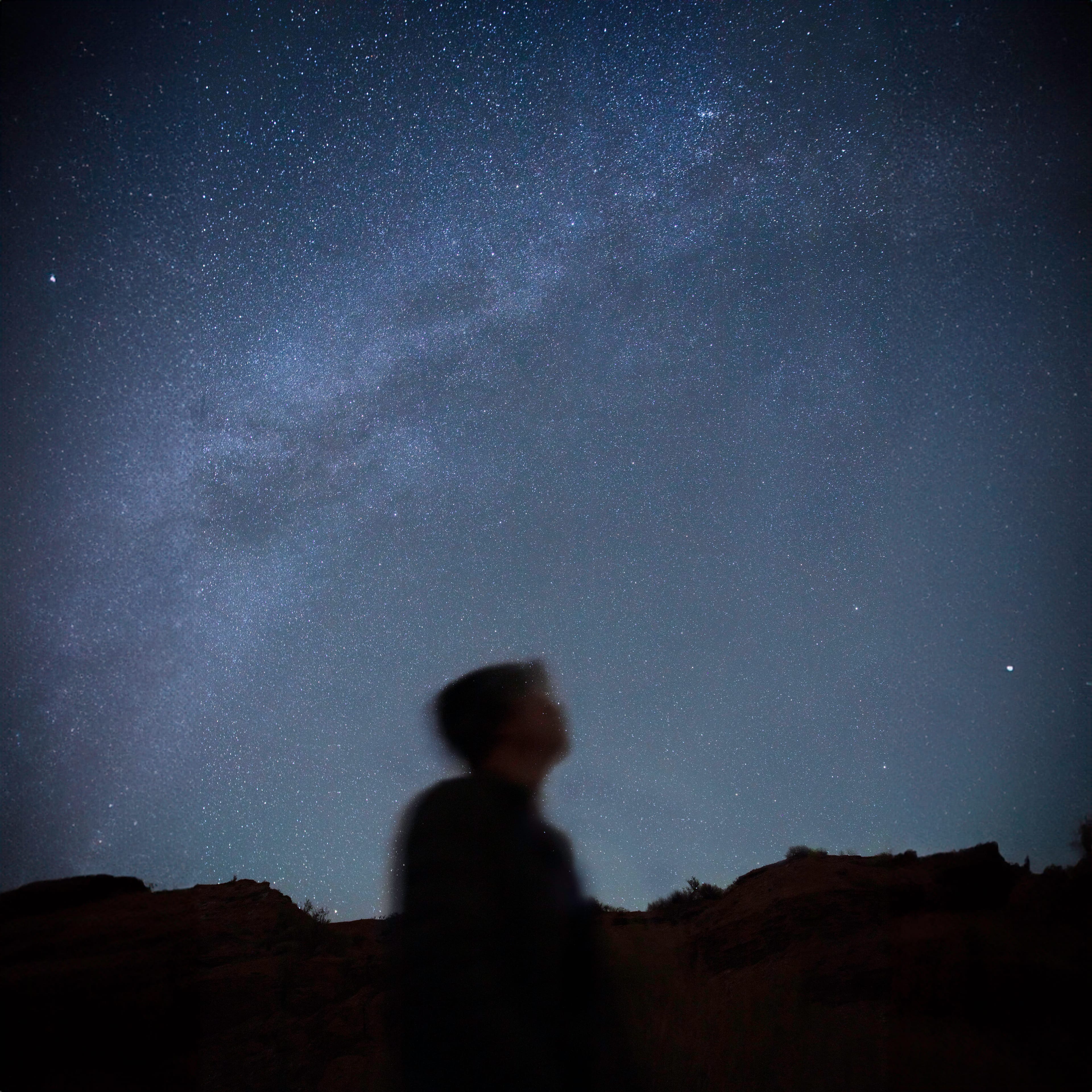
PHOTOGRAPHY BY LEAFY YUN YE
We sought out the corners of the map where human-made light doesn't dominate. Follow the stars with us.
Imagine a dome of glittering stars, with the Milky Way stretching across an inky sky. The vastness of it feels immense and total—in a good way. It can make a person feel simultaneously small and part of something larger. In the darkness, we’re awake to the universe, connected to everything.
These days, the best way to catch this feeling—to see stars and a naturally dark night—is to get into the wild. As light pollution increases by an estimated 10 percent every year, our starry skies are disappearing quickly. But the places and people protecting these sights are out there, too, doing vital work. Because a starry night isn’t just a scenic backdrop. It’s a portal to awe, an invitation to rest and a necessary part of habitats for more than half of all living things.
“I’m an astronomer, and I care about whether we can measure the sky and continue to do our science,” says Dr. Teznie Pugh, of McDonald Observatory in West Texas. “But I’ve also learned so much from people interested in migratory paths of birds, or concerned about cacti populations and the health of the Chihuahuan Desert. Dark skies for human health is another burgeoning field.”
Of all the many big, complicated environmental problems of the modern world, light pollution actually lends itself to relatively quick solutions. “Your ability to see the night sky, your quality of sleep,” Pugh says, “can be instantly transformed.”
You’ll see more from Pugh and other stargazers in these pages, as we cross the country to parks, sanctuaries, observatories, lodges—to the places that keep us outside in the dark, looking up.
TIPS FOR SAFE DARK SKY TRAVEL
1. Close window blinds and curtains to keep light inside your camper or tent.
2. If you use string lights or outdoor lamps, choose fully shielded ones with warm tones that point downward.
3. Turn off all outdoor lights when not in use.
4. Use red flashlights and lamps to protect eyesight and nocturnal creatures.
THE NATIONAL PARK
This desert expanse’s starry skies are as starkly beautiful as its daytime landscape—an extreme, arid, moonlike terrain that is the hottest, driest and lowest place in the country. At night, the stars shimmer over Death Valley from horizon to horizon, and the dry climate here means that the view is rarely obstructed by clouds or moisture. The quality of the darkness here also means that you’ll be able to see thousands more stars than you would from a suburban area—objects like the normally invisible Andromeda Galaxy and Orion Nebula are suddenly on display, even to the naked eye.
A land of fragile beauty, Death Valley’s ecosystems are also threatened, both day and night, by human activities and invasive species. The park is closed in on both sides by growing light glow that spreads from Las Vegas and even Los Angeles, and wildfire smoke can obstruct the view during the hottest seasons.
But for now, the view remains pristine. The best places for stargazing in Death Valley include Mesquite Flat Sand Dunes, Dante’s View, Harmony Borax Works, Badwater Basin and Ubehebe Crater. Visit during the winter, when the park offers guided ranger programs about the cosmos.
Other views: Zion National Park, a glittering gem for stargazers with its blanket of star-studded darkness against dramatic cliffs. Two stellar spots to stand in awe: Pa’rus Trail in Zion Canyon, and the patio of the Human History Museum. Meanwhile, in southern Colorado, Grand Sand Dunes National Park has starry views over rippling sand dunes, with ranger programs including guided full moon hikes and telescope astronomy.
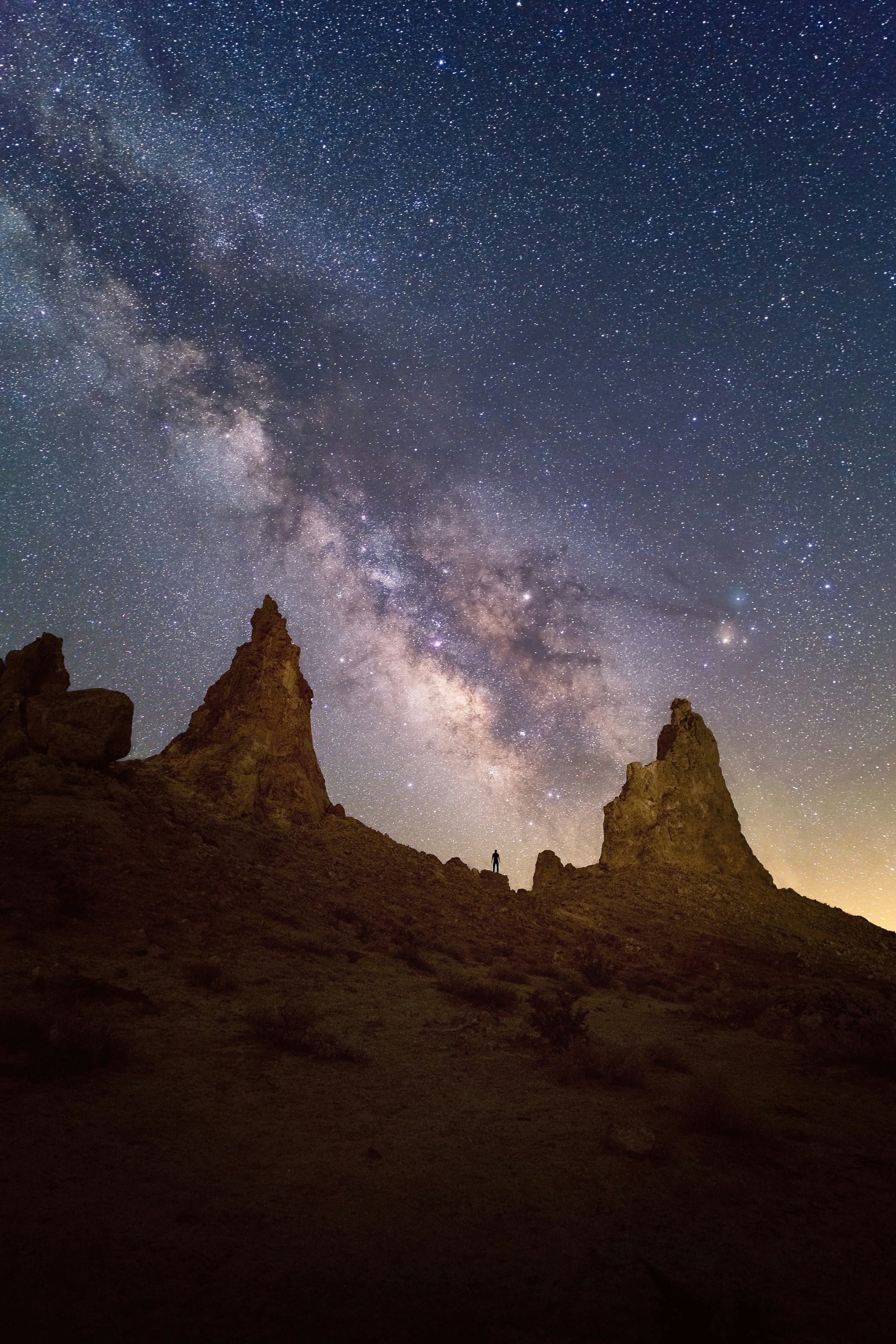
THE URBAN OUTPOST
Can you believe it? A dark sky preserve on the outskirts of Chicago? The Palos Preserves Urban Night Sky Place was certified in 2001 for its commitment to preserving the natural night in the surrounds of one of America’s largest metropolises. Palos Preserves encompass some 15,000 acres of forest and parkland: a collection of lakes, woodland, and nature reserves. Working closely with Adler Planetarium, the country’s oldest, Palos Preserves developed a dark-sky lighting plan for the surrounding area, and now presents regular astronomy and stargazing events, including full-moon nature walks and solstice parties.

Curiosity. Connection. Joy.
Need a trusty companion for a trip? Our acclaimed field guides are full of selective recommendations, delightful miscellany from the archives and secret intel.
Bullfrog Lake has year-round camping, including RV sites, as well as space for tents and a few cabins for rent.
Another view: Saguaro National Park in Tucson, Arizona—one of the best places to experience the feeling of a dark wilderness in a true urban area. Tucson is home to DarkSky International’s offices, and has implemented a city-wide lighting plan. There’s no RV camping inside park bounds, but Gilbert Ray Campground and Bar J RV Park both offer hookups nearby.
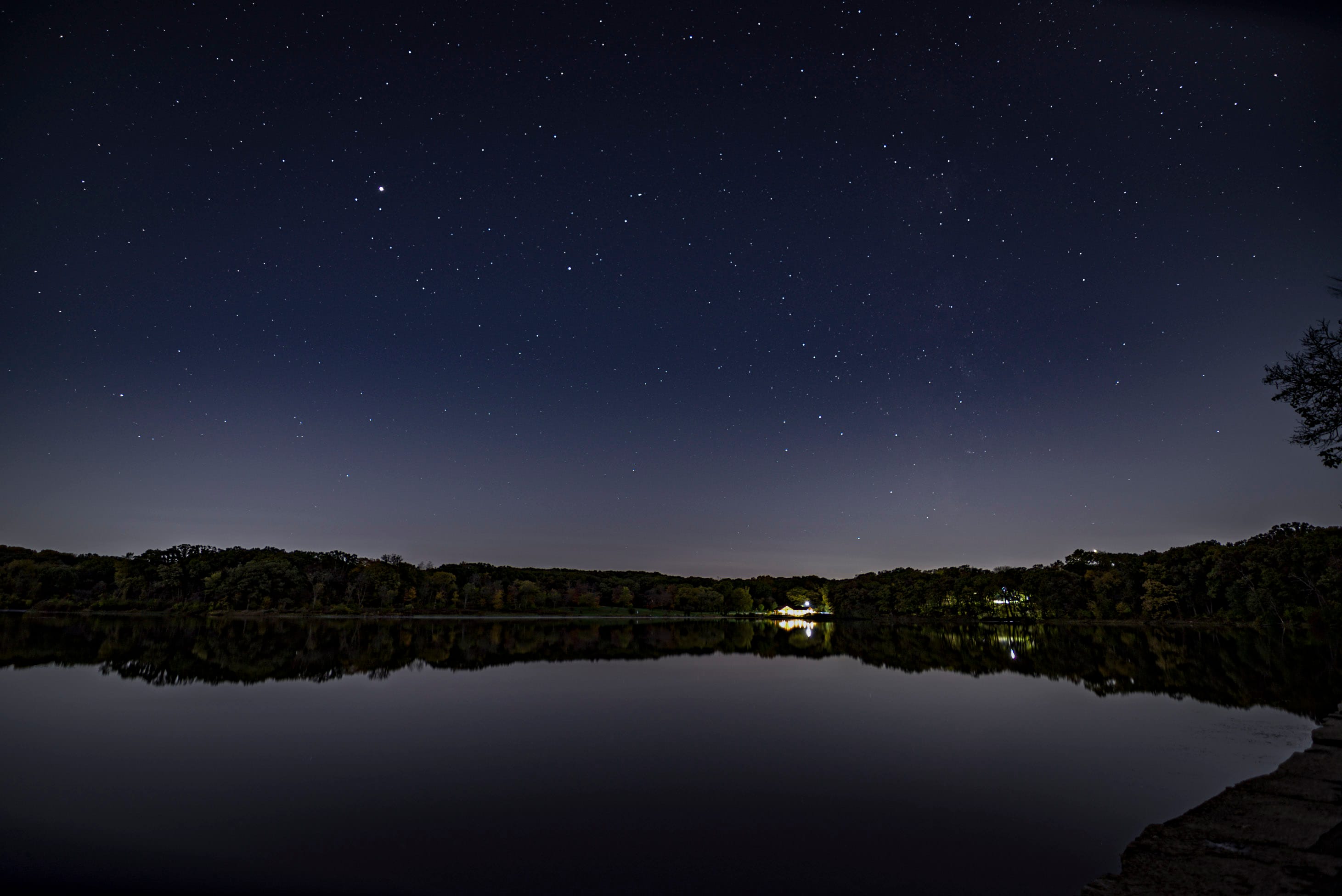
The Community
In 2015, the pro-stars, anti-light-pollution organization DarkSky International recognized the Kaibab Paiute Indian Reservation as the first-ever “Dark Sky Nation.” A decade later, Daniel Bulletts, the tribe’s cultural resources director, says the title has brought unexpected benefits.
“The designation sparked a lot of interest in our night sky traditions, which have been dormant for almost 100 years,” Bulletts says. “Tribal elders shared their knowledge on recording devices in the 1970s— songs, dances, words. We discovered from the recordings a few new songs and dances and a few new constellations. It brought a lot to us that we didn’t realize that we needed to relearn and reteach. Dark skies brought back bighorn sheep, an animal culturally significant to Southern Paiute people. We’re getting more inquiries about night-sky photography, and we do star parties once or twice a year.
“Our RV park is our big attraction because it is dark-sky friendly. Tourism is one of the things that we’re looking at now—how we can create employment opportunities for the tribe. The tribe also looks at it in a different way. We know the night sky is important for not only human beings, but for animals and plants—for quietness and reverence.”
Another view: While Groveland, Florida is just about 30 miles west from the bright lights of Orlando, the city of 23,000 has made dark skies a priority to help protect conservation lands also nearby. The city council adopted a dark-sky lighting ordinance to help give Groveland the state’s first city designation by DarkSky International.
THE OBSERVATORY
DARKER SKIES AT HOME:
1. Eliminate excessive lighting and add shields to remaining lights that direct the shine where it’s needed.
2. Choose warmer bulbs, which offer better protection for wildlife—and humans.
3. Install timers and sensors to keep lights on only as necessary.
The observatory is located on the Greater Big Bend International Dark Sky Reserve, one of only two designated Dark Sky Reserves in the United States, and has been involved in dark-sky initiatives since building its second telescope in the 1970s. But Dr. Teznie Pugh, astronomer and superintendent, says keeping the skies dark in the vast reserve is a collective effort of the area’s citizens.
“There’s a feeling of getting back to nature and disconnecting from the rest of the world when you come out here, either as a member of the public or to do science. You’re truly focused on the here and the now because you simply don’t have good cell phone coverage, and we don’t have good Wi-Fi. When you walk outside, there are so many stars, there’s so much in the sky. A lot of people have never been anywhere dark. That could mean the public coming to visit from cities, or newly minted astronomy graduate students who haven’t had the opportunity to go to a professional observing site before. And when the sky is so full of stars, the level of awe is something truly magical. And I love that both sets of people get to experience that. It’s not reserved for our professional astronomers.”
Other views: The renowned W.M. Keck Observatory in Kamuela, Hawaii, welcomes astronomers and visitors to its perch at dormant volcano Maunakea. Oregon’s Pine Mountain Observatory is near both bustling Bend and the vast Oregon Outback International Dark Sky Sanctuary—2.5 million acres.
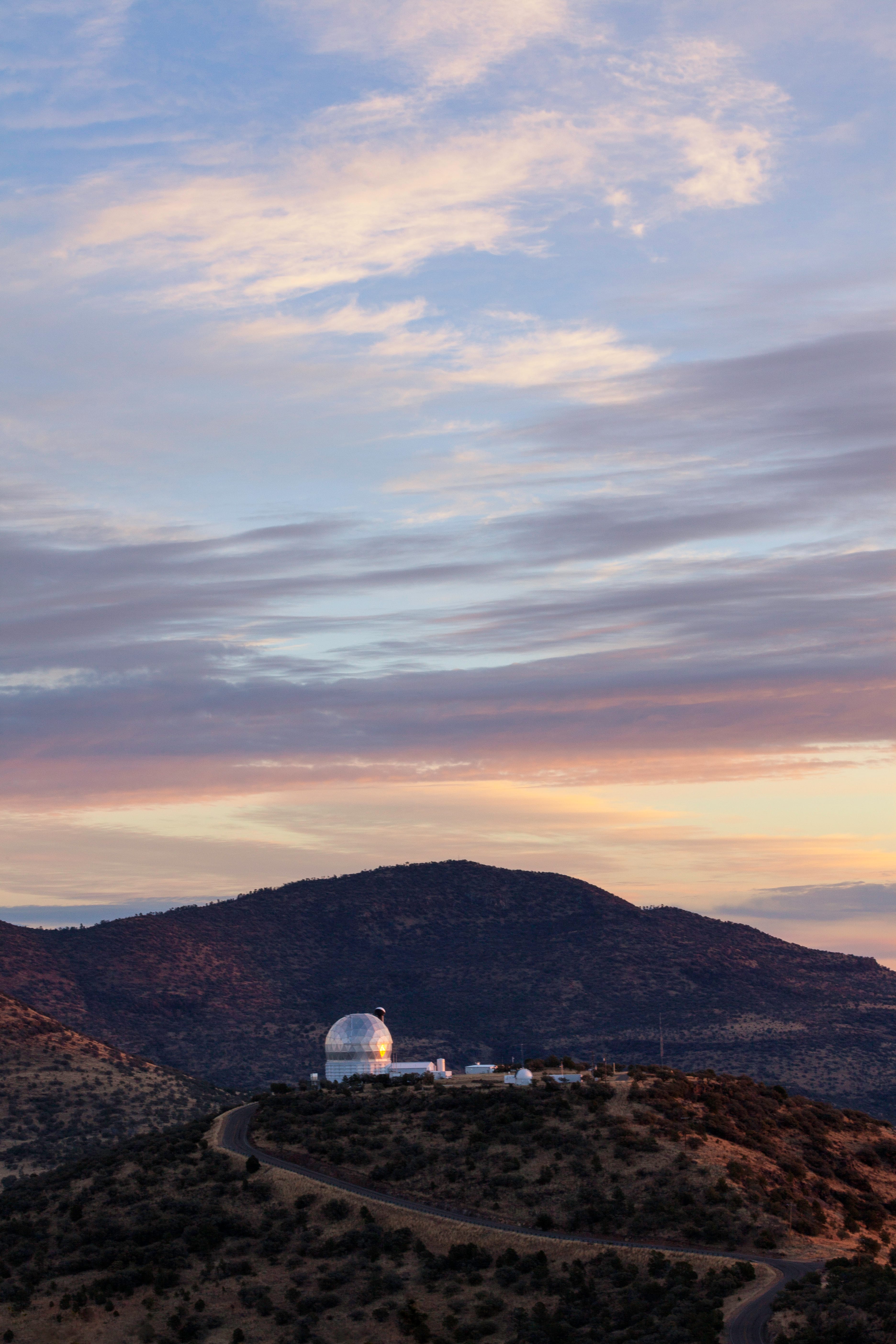
The Lodge
Utah is a contender for the darkest state in the union. Get your glamp on at Under Canvas, which became the first-ever resort certified under DarkSky’s Approved Lodging program, with its Lake Powell-Grand Staircase property in southern Utah. The luxury camping property is on a stunning plot of desert overlooking a red canyon, with dusky mesas and the waters of Lake Powell glimmering in the distance. Sunsets are a wash of pink and purple, and after the sun sets, the Milky Way shines brightly overhead. The resort’s lights are minimal and unobtrusive—think ankle-height path lighting and warm-colored lamps. The tents themselves have hardwood floors, showers in private bathrooms and plush beds, some with a stargazing window above the pillows.
There is also a fully dark telescope platform for those who bring along their own kit. The staff leads weekly guided stargazing tours with a laser pointer showcasing the constellations and planets overhead.
Another view: Keweenaw Mountain Lodge, a Works Progress Administration-era wilderness resort on Michigan’s Upper Peninsula that dates back to 1934 and is now part of the Keweenaw Dark Sky Park. Think rustic log cabins, stone fireplaces, and a “slow dining” cafe.
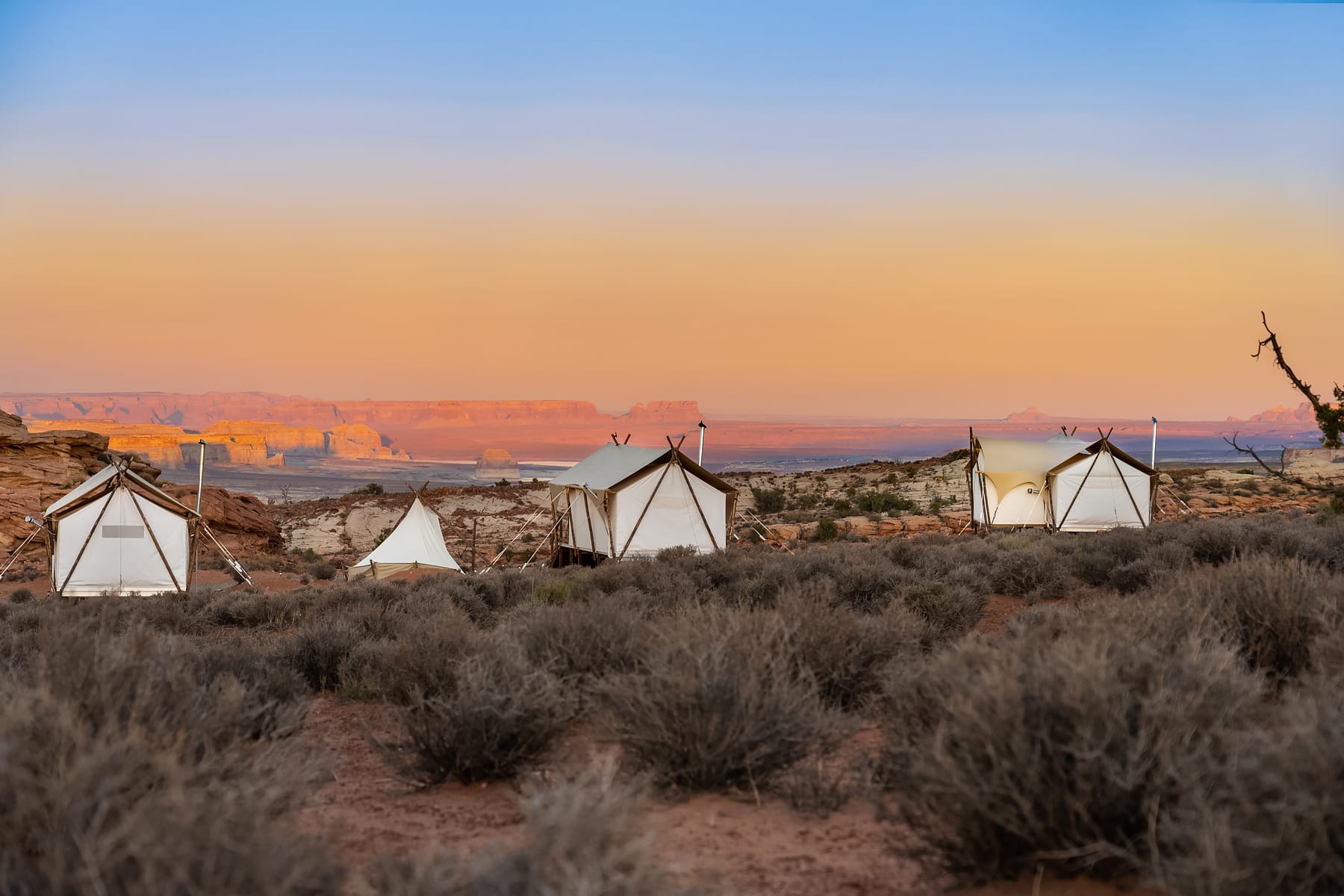
THE SANCTUARY
Set in the vast Gila Wilderness, the Cosmic Campground is a certified International Dark Sky Sanctuary—the rarest, most remote, isolated and often fragile of DarkSky’s designations. The Cosmic Campground has been set up specifically with stargazers in mind, including several flat platforms on which to use telescopes and tripods for astrophotography. The rest is primitive, with pit toilets and minimal structures or lighting, which allows for 360-degree views of the sky—an utterly mesmerizing scene after nightfall. It is one of the darkest locations in the lower 48 states: the nearest source of artificial light is more than 40 miles away, across the state line in Arizona.
Signposted rules at the campground protect the quality of the sky—in particular, visitors should not use headlights or any blue-white light after sunset. Red flashlights are allowed and only then when absolutely necessary. Serious astronomers and photographers come here specifically for the quality of the sky—so don’t be surprised if you are politely reminded about the lighting rules!
Another view: Katahdin Woods and Waters National Monument in northern Maine is a certified Dark Sky Sanctuary, and home to moose, lynx and beavers. There are three front-country campsites with road access at Sandbank Stream Campground, Lunksoos Campground and Upper East Branch Campsite.
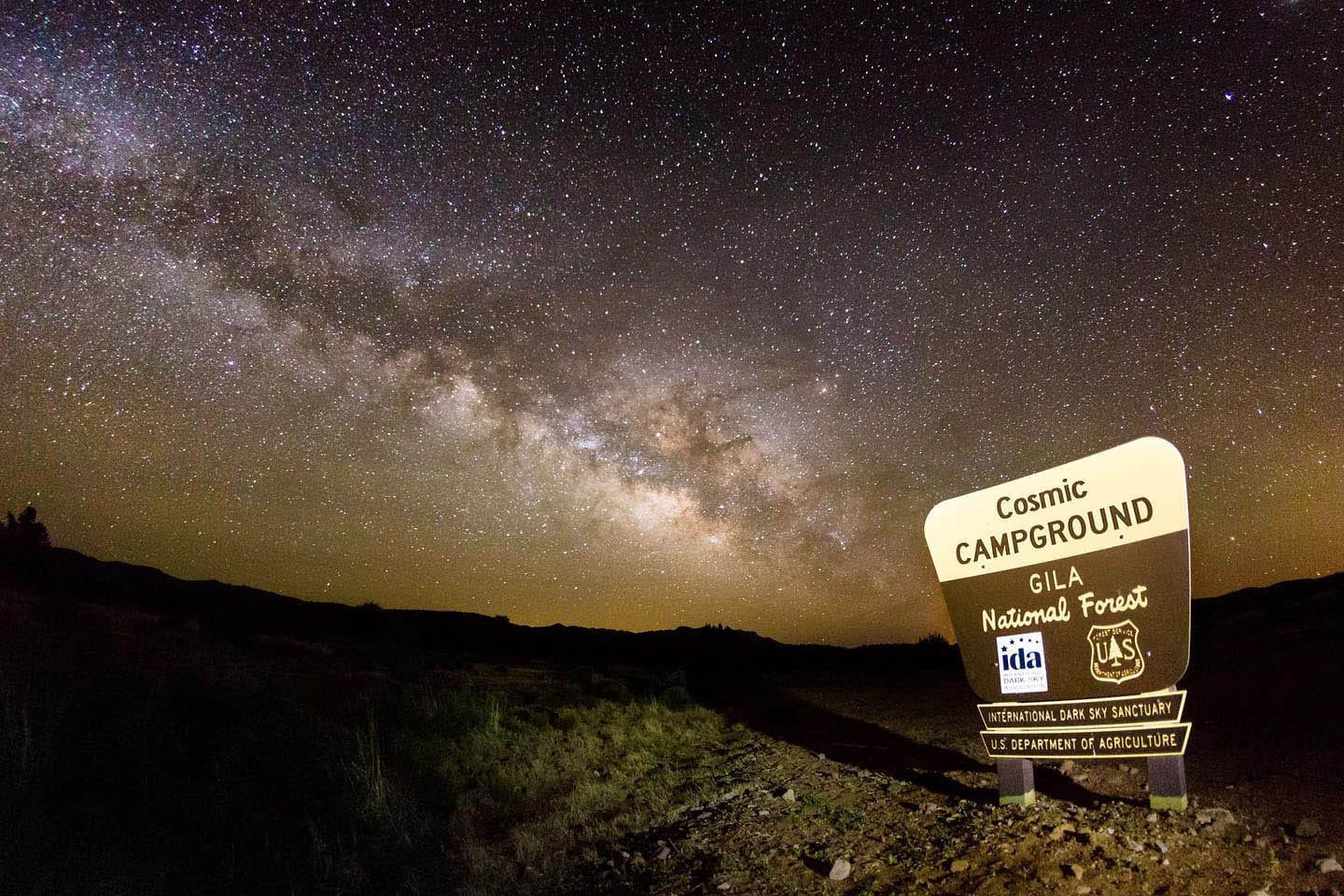
The Event
Greg Redfern, who has led space talks at Shenandoah National Park for a decade, remembers the night of a Perseid Meteor Shower, when he was joined by rangers, astronaut Tom Jones and about 3,000 night-sky spectators. Families speaking an array of languages camped out on both sides of the road for more than half a mile. Redfern also has authored books and served as a longtime NASA JPL Solar System Ambassador. He blogs near daily at whatsupthespaceplace.com, and has been on 47 cruises around the world where he shows people the stars from sea.
“I got into it as a very young kid of about five years old, being exposed to the dark skies of Nebraska on a farm,” Redfern says. “The sky has stayed with me ever since. In the Navy, as an officer, I was the navigator on my ship, so I would shoot the stars and the sun almost every single day to find out where we were. I’m fond of saying, I never got lost. But there were days where I didn’t know where I was.
“Some people have never seen the Milky Way in their life—and people can get kind of emotional when they see all its splendor. I’m not in it for the money, but I’ll tell you I’m in it for the joy of the universe, of which we are all part of and from. It transcends age, it transcends race. It transcends just about anything that we carry within us.”
Another view: The Black Hills Astronomical Society, with its Hidden Valley Observatory on the west side of Rapid City, South Dakota, has hosted a variety of star parties since 1956.
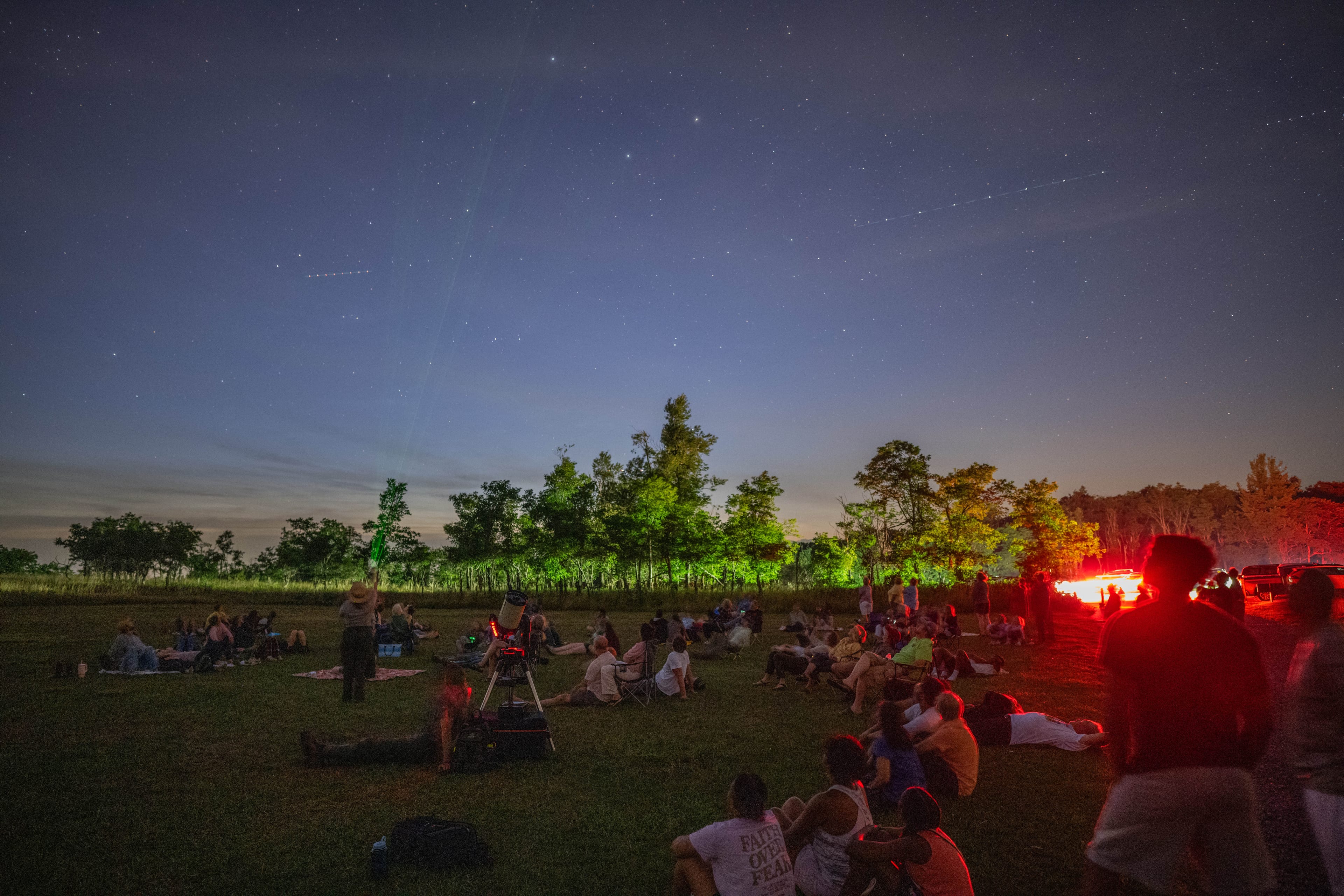
Read more like this

